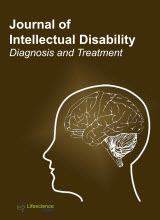jiddt
|
|
Abstract: In periods of social change, creativity is the leading resource for human adaptation. Therefore, in the learning process, it is important to provide for the development of creativity both as a professional skill and as a general life competence. This work aims to elucidate the features of the formation of creativity and intelligence of students in connection with their position in interpersonal relationships. We measured various creative abilities of 224 students of the Faculty of Physical Education (a set of tasks from the tests of creativity by Torrance and Guilford); general intelligence (Raven’s Progressive matrices) and sociometric status (Moreno’s method, the criteria of educational achievements, informal-emotional communication and sports team leadership were used). It is shown that in the learning process, students significantly increase the level of general intelligence, verbal and practical (everyday) creativity increases. The uneven dynamics of the manifestations of different types of creativity depending on the stage of learning was revealed: during periods of intense adaptation, a redistribution of cognitive efforts to achieve more significant and relevant goals was observed. Eight different types of combinations of creative abilities and general intelligence that determine the diversity of students’ adaptation strategies have been identified. Direct correlations and nonlinear relationships between the severity of various cognitive abilities and sociometric status are described. The balance of intellectual and creative processes, their effective use in various situations of interpersonal interaction is the key to gaining social authority. Keywords: Everyday creativity, verbal creativity, imaginative creativity, general intelligence, leadership, physical training.
|
|
|
Abstract: This study was done to determine the risk of anxiety and depression symptoms among fragile X premutation carriers. Hamilton anxiety rating scale (HARS) and Hamilton depression rating scale (HDRS) was administered by trained physicians to measure the severity of anxiety and depression symptoms, respectively. Caregiver distress factors which directly contribute to caregiver burden in particular degree of relationship with the child, number of FXS child, child institutional/educational status, number of hours spent providing care per day, and the degree of illness severity were documented. Thirty-one fragile X carriers (27 females, 4 males), aged 32-77 years participated in this study. Only 3.2% had anxiety symptoms, while depression symptoms were identified in 35.5% carriers. Number of hours of providing care/day were significantly associated with depression symptoms (p<0.001). The prevalence ratio (PR) of depression among individuals who had a distress score above cut-off was 3.2 (95% CI= 1.2 to 8.5) compared to those who had a distress score below cut-off with p=0.02. Fragile X premutation carriers are at a greater risk to develop depression symptoms related to the hours spent in caring for children with fragile X syndrome (FXS). Keywords: Anxiety, depression, fragile X-associated disorders, premutation carriers, caregiver burden.
|
|
|
Abstract: The concept of "Fast Track Surgery" has been of increasing interest, which implies accelerated recovery and a decrease in the frequency of postoperative complications, namely, a decrease in the body's stress response to surgery. The study aimed to assess the effect of Fast Track Surgery on the degree of surgical treatment trauma based on the dynamics of the functional integration of hormonal components of the stress-realizing / stress-limiting systems in the perioperative period. The study was conducted in 3 groups of patients. Groups of patients are comparable in age, sex, diagnosis of an underlying disease, degree of operative-anaesthetic risk ASA, intraoperative parameters, which allowed to carry out an analytical evaluation of the results of the study as objectively and reliably as possible. In the postoperative period, the maximum increase in stress-realizing system parameters in all groups was registered in patients after 1 day after surgery, less significant after LSSI-F: the concentration of daily excretion of dopamine exceeded the preoperative values by 1.2 times, epinephrine 2.0 times, norepinephrine in 1.3 times. Along with the activation of the stress-realizing system, a dynamic increase in the activity of the stress-limiting system was noted: after LSSI-F, the level of GABA increased by 1.3 times, after TSSI, the GABA secretion increased 1.2-fold. Laparoscopic SSI in combination with "Fast Track Surgery" contributed to a decrease in the intensity of the patient's stress response to the operating injury, which, in turn, significantly increased the effectiveness of simultaneous treatment and the quality of life of patients. Keywords: Fast Track Surgery, simultaneous operations, combined pathology, stress-realizing and stress-limiting system.
|
|
|
Abstract: The article presents an analysis of the general characteristics of negative psychosocial experiences and their possible impact on the psychosexual sphere of children and adolescents with intellectual disabilities and autism spectrum disorders. Seeking such factors, the focus was on the family environment. Particular attention was paid to parental attitudes towards the child with indicated developmental disabilities and the child's sexuality. The tasks essential for the development of sexuality during childhood and adolescence were described. Possible problems and difficulties that may arise in this sphere in persons with developmental disabilities in the context of negative experiences were analyzed. General guidelines important for supporting parents were outlined, which are important from the perspective of limiting the adverse psychosocial experiences of children. Keywords: Sexual development, psychosocial experiences, childhood, adolescence, autistic spectrum disorders, intellectual disability.
|
|
|
Abstract: Objective: To describe a behavioural feature, the outstretched pointing (and shaking) index finger, as a clue to the clinical diagnosis of Angelman syndrome (AS) in adults. Keywords: Angelman syndrome, behavioural phenotype, index finger.
|


